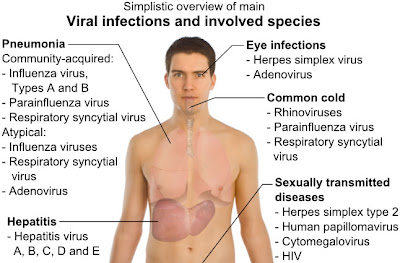Long distance signals protect brain from viral infections
The brain contains a defense system that prevents at least two unrelated viruses—and possibly many more—from invading the brain at large. The research is published online ahead of print in the Journal of Virology.
“Our work points to the remarkable ability of the immune system, even within the brain, to protect us against opportunistic viruses,” says Anthony van den Pol of Yale University, an author on the study.
The research explains a long-standing mystery. The olfactory mucosa in the nose can serve as a conduit for a number of viruses to enter the brain including rabies, polio and influenza viruses. Yet infections in the central nervous system rarely occur. The mechanism responsible for protecting the brain from viruses that successfully invade the olfactory bulb (OB), the first site of infection in nasal mucosa, remains elusive.
Van den Pol and his colleagues have discovered that, in response to viral infection, cells in the olfactory bulb release long-distance signaling molecules that tell cells in uninfected parts of the brain to produce anti-viral interferon, a first line of defense against invading viruses.
In the study, normal mice expunged the infection, while mice lacking receptors for the initial signaling molecules succumbed as the viruses spread throughout the brain, proving the critical role of these molecules.
These signaling molecules are different than regular neurotransmitters. Van den Pol notes that during neuronal signaling, neurotransmitters released by one cell travel across a mere 20 nanometers of synapse to the next nerve cell. Yet, the long-distance signaling molecules diffuse up to 15 millimeters.
 “That distance is almost a million times greater than the distance across a synapse,” he says.
“That distance is almost a million times greater than the distance across a synapse,” he says.
“The success of the immune system in blocking two unrelated viruses, vesicular stomatitis virus and cytomegalovirus, suggests that our results may generalize to many other viruses that can enter the brain through the olfactory nerve,” says van den Pol.
###
Journal of Virology is a publication of the American Society for Microbiology (ASM). The ASM is the largest single life science society, composed of over 39,000 scientists and health professionals. Its mission is to advance the microbiological sciences as a vehicle for understanding life processes and to apply and communicate this knowledge for the improvement of health and environmental and economic well-being worldwide.
###
Jim Sliwa
.(JavaScript must be enabled to view this email address)
202-942-9297
American Society for Microbiology